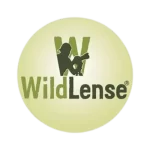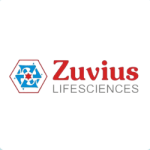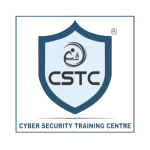Why Brand Visibility Matters (More Than Clicks)
You want sales. Understandably. Yet, brand visibility is the engine that gets you there, again and again.
Let me ask you this: when’s the last time you bought after seeing just one ad? Exactly.
You noticed. You remembered. Then you searched.
That’s brand visibility doing quiet, compounding work.
Accordingly, this post gives you a simple plan to build brand visibility with confidence, so people think of you first.

What is Brand Visibility, really?
Brand visibility is how often your ideal customers see and remember you across touchpoints. In other words, not only are you present, you’re familiar. As a result, when they’re ready to buy, they search your name instead of “best alternatives.”
Why it matters: Familiarity builds trust. Trust lowers friction. Consequently, conversions feel natural rather than forced. Research also shows people often lean on trusted voices and sources, not only ads, when deciding.
Clicks vs. Visibility: Stop Chasing Shadows
Clicks feel good. CTR pops, dashboards cheer, everyone high-fives. However, clicks can mislead. A click shows curiosity in the moment. Brand visibility shows memory when it counts.
Been there, example:
A D2C skincare brand had wild CTRs and weak revenue. We shifted from hard sells to story: BTS content, short how-tos, UGC, and steady YouTube + Instagram presence. Sooner or later, branded searches climbed. Then sales followed. Not only did ads get cheaper, but word-of-mouth also kicked in.
Why Visibility Beats Short-Term Wins
It plants seeds. People may not buy today; in time, they will recall you.
Visibility keeps you top-of-mind. When the need hits, they type your brand.
It compounds. Think equity, not spikes. In the long run, brand visibility lowers your blended CAC.
Evidence to ground this: consumer trust often skews toward people and communities; they recognize creators, friends, niche experts, as well as consistent brands. Balance matters: undisclosed influencer posts backfire; transparent, steady presence wins trust.
Mini Case: Amul & Consistency
You’ve seen Amul’s topical ads everywhere. All of a sudden, a cultural moment drops, and Amul is there again and again. That rhythm creates recall. Similarly, your brand can show up with a consistent tone, visual style, and timing across platforms so people feel they know you.
Mini Case: Reebok & Association
Reebok partnered with fitness-forward ambassadors (e.g., John Abraham) to anchor meaning: strength, movement, identity. As a result, visibility wasn’t random; it was positioned. Be like that: stand for something, then repeat it, with attention to the channels your targeted audience actually uses.
Choose the Right Marketing Channels (without guesswork)
First things first: understand where your people hang out.
Know Your Audience
Demographics & behavior: Where do they scroll? What do they save?
Use GA4, Search Console, Meta Audience Insights, and simple surveys.
To clarify, confirm your top 3 content formats they enjoy (short video, carousels, tutorials).
Evaluate Channel Performance
Organic:
SEO: Ship helpful content that answers specific questions.
Social: Instagram, LinkedIn, YouTube, as well as community platforms.
Paid:
Search: Capture high-intent queries (branded + category).
Social Ads: Target by interest, as well as lookalikes.
Test, then double down
A/B the first 4 weeks.
Track CTR, view-through rate, branded search volume, assisted conversions, and post-view conversions.
Shift budget then to what moves both reach and recall.
Tailored Channel Mix by Industry (quick starts)
1) E-commerce
SEO: Optimize category/product pages for intent phrases like “buy [product] online.”
Social Ads: Visual platforms (Instagram, Facebook) for demos and UGC.
Email & SMS: Abandoned carts, launches, VIP drops.
Influencers: Micro-creators with transparent disclosures build believable exposure. (Consumers often trust disclosed creator recommendations more than brand ads.)
2) Technology & SaaS
Content marketing: Problem-solution posts, webinars, short Loom-style explainers.
SEO: Pain-point clusters (“how to reduce [X]”).
LinkedIn Ads: Target roles, not just interests.
Lifecycle Email: Trials → onboarding → proof moments.
3) Hospitality & Travel
Social + Visual: Instagram, YouTube Shorts, Reels with itineraries.
Search: Capture “best hotels in [location]” and experience-led queries; travelers rely heavily on search during planning.
Reviews: Maintain credible review presence; TripAdvisor processes tens of millions yearly and reports ongoing fake-review crackdowns, so transparency and response quality matter.
4) Health & Wellness
YouTube Education: Tutorials and routines build authority.
Instagram & Communities: Tips, before-and-afters, Q&A.
SEO: “Best yoga classes near me,” “natural remedies for [problem].”
5) Retail (Brick-and-Mortar)
Google Business Profile: Local SEO with reviews, photos, updates.
Instagram & WhatsApp: Drops, restocks, events.
Email & SMS: Loyalty, receipts, and timely nudges.
How to Build Brand Visibility (the simple system steps)
1: Be where your audience is
In this case, list 2 – 3 primary platforms and one test channel. Avoid platform FOMO.
2: Use a full-funnel content mix
Stories & behind-the-scenes (trust).
How-to & demos (usefulness).
Testimonials & UGC (social proof).
Thought leadership (authority).
As soon as you map these to the funnel, your publishing becomes balanced, not spammy.
3: Track the right signals
Impressions, reach, frequency
Branded search volume (Search Console)
Direct traffic & referrals
Social mentions and share of voice
Post-view conversions (where available)
4: Keep your message consistent
Create a one-page brand voice guide: promise, POV, 3 message pillars, 5 phrases you repeat. With this in mind, your website, ads, emails, and socials will sound like the same brand.
5: Borrow trust
Partner with both influencers and creators, and communities your buyers already follow, provided that you request clear disclosures. Undisclosed posts erode credibility.

The Role of Brand Strategy (make everything simpler)
Core values & purpose: Example: Tata Tea’s “Jaago Re” links brand with social awakening.
USP: Mamaearth’s “toxin-free, eco-conscious” stance clarifies choice.
SMART goals: e.g., “Increase brand visibility and branded search by 20% in 6 months via LinkedIn + YouTube.”
EEAT, explicitly: cite reputable data, show real examples, use bylines, and maintain consistent author profiles. For a primer on YouTube as a visibility lever, see Google’s guidance on awareness campaigns.
Keep It Consistent Across Touchpoints
Centralize brand guidelines: logo, colors, Do/Don’t, tone, message pillars.
Automation: Hootsuite, Buffer, or Mailchimp for cadence.
Quarterly audits: prune off-brand posts; refresh top pages.
Seamless journeys: Same promise from ad → landing page → onboarding.
On the whole, consistency is the shortest path to recall.
Watch: A useful walk-through
YouTube: Branding Masterclass: How to Create a Brand Strategy
Quick Reference: Industry stats that inform strategy
Consumers often trust influencers (when disclosed) more than brand ads; Edelman reported 63% in its trust study. However, poor disclosure flips trust the other way.
Travel discovery and planning lean heavily on search; align content and ads accordingly.
Reviews matter for hospitality; use transparent practices as platforms crack down on fake submissions.
Want a deeper dive? See What Is Brand Visibility by SEMrush for definitions and tactics.
Next Step
Explore our Brand Visibility Playbook → [/services/brand-visibility]
(You’ll get templates, a 90-day plan, and KPI dashboards.)
3-Bullet Recap
Visibility > Vanity: clicks are short-term; brand visibility compounds recall and lowers CAC.
Be consistent: same message, multiple channels, steady cadence.
Track memory, not just motion: branded search, direct traffic, mentions, and assisted conversions.
Next Steps / Tools
Set up measurement: GA4 + Search Console + a simple SOV tracker.
Ship a content cadence: 3 pillars, 2 formats each, weekly rhythm.
Run one awareness channel test: YouTube or LinkedIn, then scale if … then results hold for 4–6 weeks.
You don’t need to be everywhere. You need to be remembered. Start small, show up again and again, keep the message the same, and watch brand visibility do its quiet, compounding magic.
Want help building a visibility-first plan that won’t torch your budget? Let’s talk →
Recommended Reading:
FAQ: How Brand Visibility Matters
What is brand visibility?
Brand visibility is how often your ideal customers see and remember you across touchpoints. In other words, it’s not only presence, but also familiarity, so that when they’re ready to buy, they think of you first.
Why does visibility matter more than clicks?
Clicks show curiosity right now; visibility builds memory for later. Consequently, strong brand visibility increases branded searches, direct traffic, and conversion rates over time, while ad costs typically fall as trust rises.
How do I measure brand visibility?
Track leading and lagging signals accordingly:
- Leading: impressions, reach, frequency, social mentions, share of voice
- Lagging: branded search volume, direct traffic, assisted/post-view conversions
To clarify, review leading indicators weekly and lagging indicators monthly.
What’s a simple plan to improve visibility in 90 days?
Weeks 1–2: lock message pillars, voice, and tracking (GA4, Search Console, UTMs).
>Weeks 3–8: publish consistently on 2–3 channels (SEO + short video + 1 social).
>Weeks 9–12: double down on winners; launch one creator/partner collab.
As a result, you’ll see steadier reach and rising recall.
Which channels lift visibility fastest?
It depends on your audience; however, these work well together:
- SEO: answers questions; compounds in the long run
- YouTube/Shorts/Reels: familiar faces, repeat exposure
- LinkedIn/Instagram: teach, show proof, start conversations
- Light paid: awareness + retargeting to stabilize frequency
Similarly, partnerships borrow credibility and speed up recall.
What should I post to build visibility (not just clicks)?
Use a balanced mix: teach (how-tos), show (demos/UGC), prove (testimonials/case bites), and lead (POV/myths). Specifically, repeat the 3 message pillars across formats so your brand sounds consistent.
How often should people see my brand?
Aim for a sustainable frequency window: 3–7 exposures per week per active channel. Of course, quality beats spam; therefore, keep messages consistent and genuinely useful.
What’s the difference between brand awareness and brand visibility?
Awareness is “I’ve heard of you.” Visibility is “I see you often enough to remember and trust you.” Accordingly, visibility is the rhythm that turns awareness into preference.
How does visibility translate into revenue?
Visibility increases recognition; recognition lowers friction. Then again, lower friction improves conversion rates on search, direct, and retargeting, therefore reducing blended CAC and boosting LTV over time.
What KPIs should I report to stakeholders?
Report a balanced set: reach, frequency, saves/shares, branded search volume, direct traffic, profile visits, returning visitors, assisted conversions. On the whole, this shows memory and money.
Do I need paid ads to build visibility?
Not necessarily. You can start with organic SEO and short video; however, light paid support (awareness + retargeting) helps control frequency and accelerates results, provided that the creative matches your core message pillars.
What common mistakes hurt visibility?
- Inconsistent message and visuals across channels
- Chasing CTR instead of measuring branded search/direct
- Publishing everywhere, but engaging nowhere
- Undisclosed influencer posts (trust erodes)
Instead, choose fewer channels, engage daily, and disclose partnerships clearly.
How is B2B visibility different from B2C?
B2B relies more on LinkedIn, educational content, webinars, and founder POV. B2C leans on short video, UGC, creators, and reviews. Even so, both require consistent pillars and a helpful tone.
How much budget should I set aside?
Start with a modest monthly split, e.g., 60% content production, 30% paid awareness/retargeting, 10% partnerships. Then, reallocate quarterly, if (and only if) winners are clear.
What tools make visibility easier?
Use GA4 + Search Console (measurement), a UTM builder (attribution), a scheduler like Buffer/Hootsuite (cadence), and a simple SOV/mentions tracker. With this in mind, you’ll spend more time creating and less time guessing.
















